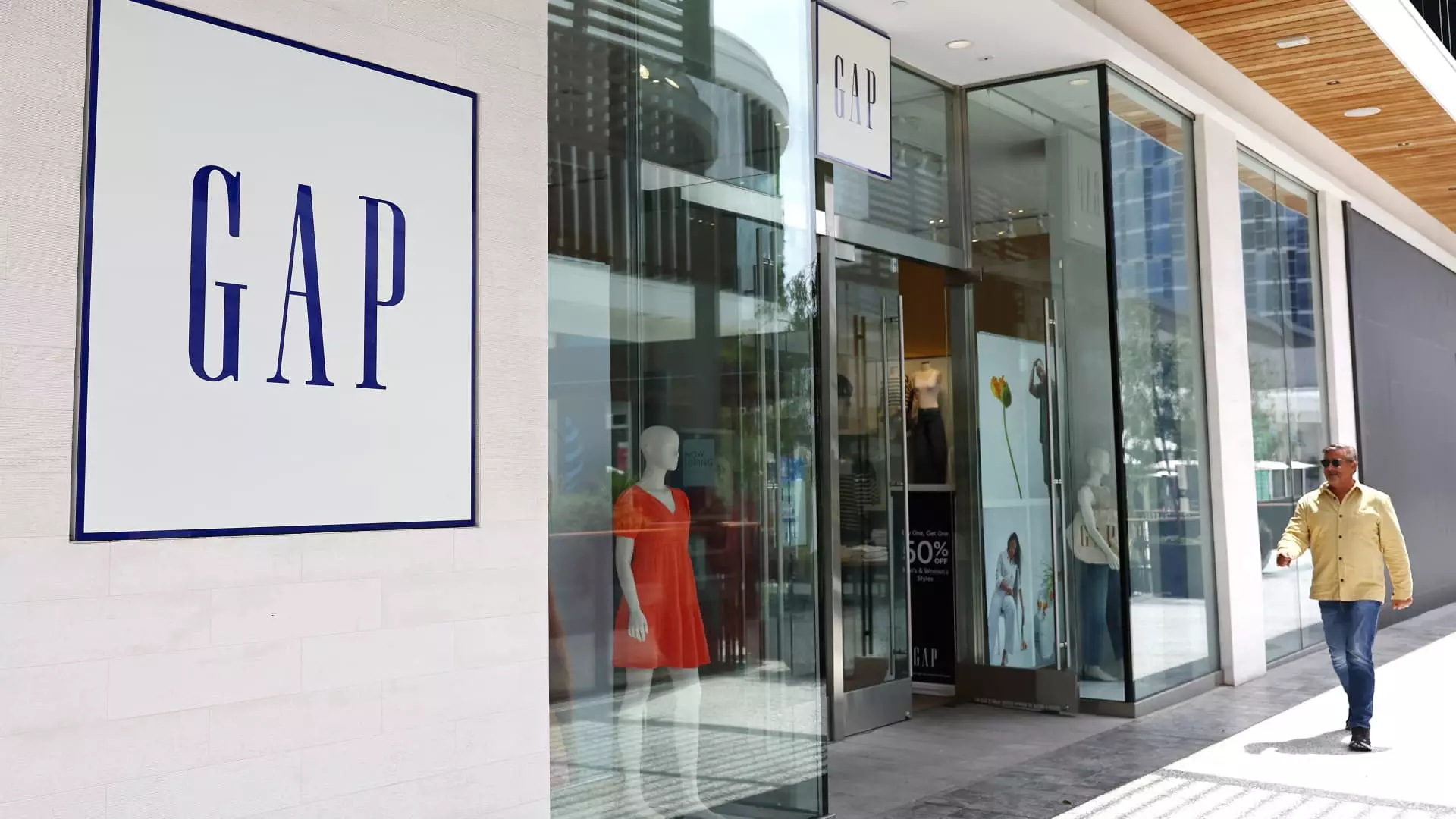Among the cacophony of today’s market movements, Broadcom stood out like a beacon of success. This semiconductor giant experienced a staggering 10% surge in stock value following an impressive fiscal first quarter. With revenue projections that eclipsed Wall Street expectations, Broadcom is not just riding the wave of technological advancement; it’s harnessing it. As we stand on the precipice of digital transformation, Broadcom’s strategic foresight seems to position it favorably amid increasing demand for digital infrastructure. Their rosy forecast of $14.9 billion in anticipated revenue indicates an acute awareness of market dynamics and consumer needs. This kind of performance is a reminder that even amidst a turbulent economy, the right company can not only survive but flourish.
The Fashion Retail Renaissance
Gap Inc. has seen a remarkable revival, turning heads with a 17% spike in stock following its recent earnings report. The company’s umbrella of brands, including Old Navy and Banana Republic, has tapped into the evolving fabric of consumer preferences, leading to a fiscal fourth-quarter performance that not only met but exceeded financial forecasts. With earnings reported at 54 cents per share—significantly higher than anticipated—Gap has demonstrated a remarkable adaptability that should encourage other retailers to reassess their strategies. The 3% growth in same-store sales outpacing predictions signals that consumers are ready to invest in quality over quantity, a powerful trend management should heed for a potential revolution in retail.
Faltering Giants: The Cautionary Tale of Hewlett Packard
In stark contrast, Hewlett Packard Enterprise’s 20% drop in stock price serves as a sobering reminder of market volatility. The tech industry is not for the faint of heart, as evidenced by the company’s disappointing guidance for second-quarter earnings and revenue. This sharp decline can be attributed to misalignment with market expectations—earnings forecasts falling short of Wall Street metrics raises questions about the strategic vision underlying its product lines. The announcement of layoffs adds a troubling layer of distress, suggesting deeper operational problems that could take years to address. It serves as a warning for others in the tech space: foresight is not just beneficial; it’s essential for survival.
Space Ventures and Dismal Returns
The realm of space exploration witnessed a stark reminder of how high the stakes can be, as Intuitive Machines faced a catastrophic 36% drop in share value following its moon lander’s failure. With visions of lunar colonization, such mishaps can be not only financially damaging but also reputation-threatening. While the excitement surrounding space technology is palpable, investors need to assess the risks critically. This isn’t merely about rocket science; it’s about the investment in futures that can sometimes come crashing down—quite literally.
Software Stability? Not So Fast
Software solutions company Samsara experienced a 9% dip as its first-quarter guidance remained firmly in line with analyst predictions. Here lies an important lesson as not all news is good news, especially when expectations are low. Investors often look for progress or potential; stagnation in predictions can set off alarm bells. Though consistent earnings are generally positive, they can also spell the beginning of stagnation. In an industry driven by rapid innovation, complacency can lead to obsolescence.
The Unpredictable Realm of AI
BigBear.ai provided another shocking insight with its 16% drop, attributing the fall to uncertain federal contracts amidst a political climate rife with austerity measures. The ramifications of policy changes on tech companies can create immense unpredictability, pushing investors to reconsider the stability of their holdings in emerging sectors like artificial intelligence. The consequences of such delays stress the need for agencies, and organizations alike, to maintain a focus on robust programming and smoother contractual processes that can weather political shifts.
Once Struggling, Now Surging: Walgreens Boots Alliance
In a rather unexpected twist, Walgreens Boots Alliance saw shares rise by 7% following the announcement of a strategic acquisition approach by Sycamore Partners. This shift not only denotes a revival but also illustrates how private equity can breathe new life into traditional business models. The deal, preserving value for shareholders, indicates that with the right financial partners, even fading giants can find new paths to profitability and relevance.
Retail Giants and Market Realities
Lastly, cost pressures affected Costco, which faced a nearly 2% decline after second-quarter earnings fell short of analyst expectations. The varied performance among retail stocks reflects a complex interplay of market conditions and consumer behavior. Investors should glean from Costco’s struggles the importance of effective cost management amidst shifting market conditions. The expectation that consumers will continue to flock to retail giants without periodic recalibration of forecasts is naive. Adapting to consumer demand while juggling cost efficiency is the clarion call of the current market.
Navigating today’s market environment is more than just a numbers game; it requires an acute understanding of consumer sentiment, operational competency, and the inherent volatility of ambitious fields. As we continue to delve into these earnings reports and stock movements, it’s essential to remember that while opportunity abounds, pitfalls lie in wait for the unprepared.

